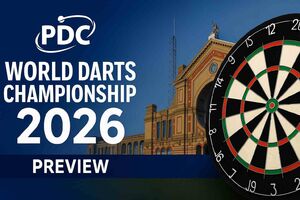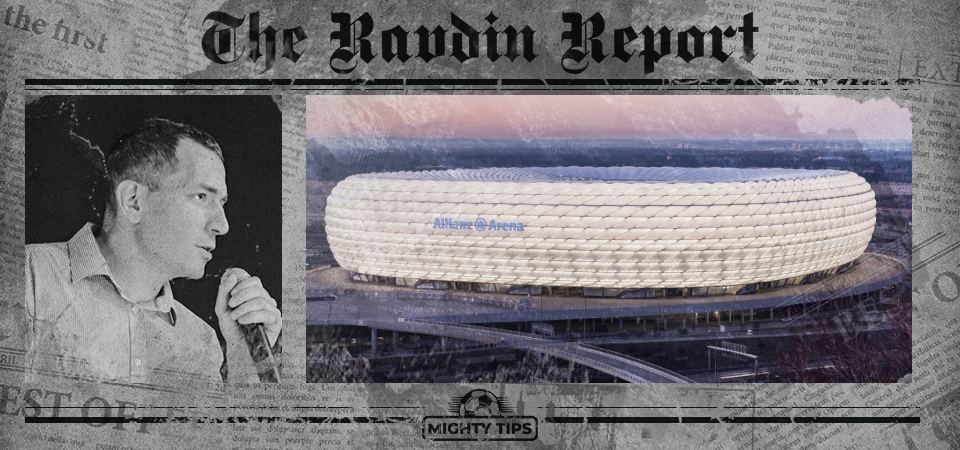
PDC World Darts Championship 2026 predictions and preview

Football never stops. Six days before Spain defeated England 2-1 in Berlin to claim the UEFA EURO 2024 title, the new UEFA Champions League season had kicked off with six first qualifying round matches played all over Europe.
We are still in the early stages of the qualification but the final, to be played at Allianz Arena in Munich on 31 May 2025, is already looming. Between them lies a chasm that we all – the players, the fans, the clubs, the journalists – will have to navigate. The new Champions League format.
In May 2022, UEFA approved the introduction of a new format for its premier club competition, and we are about to witness it as of September 2024 when the group stage begins. Oh, I’m sorry, it’s not the group stage anymore. It’s the league phase!
An exciting new era for European club football awaits 🤩
Here’s how the #UCL will look from 2024/25 👇 pic.twitter.com/mEffFOpX2O
— UEFA Champions League (@ChampionsLeague) March 4, 2024
So what does it mean in a nutshell? Thirty-six teams instead of thirty-two. One big league instead of eight mini-tournaments in groups of four. Eight matches against eight different teams instead of playing three group opponents on a home-and-away basis.
At the end of the league phase, the top eight teams progress to the Round of 16. The next 16 engage in knockout play-offs for the right to join them. And the last 12 are eliminated from European competitions.
With UEFA Europa League and UEFA Conference League following similar format, I was eager to ponder on the pros and cons of these changes, which often are the two sides of the same coin.
The more the merrier, right? More matches mean bigger revenue for most of the stakeholders. Bigger gate revenues and bigger prize money for the clubs. More spectacle for the fans, allowing more lucrative sponsorship deals for the clubs and TV contracts for UEFA which reinvests a large proportion of their revenues into further development of the European football.
That is a definite pro if you ask me. But having more matches also means…
This has been a hot topic in football for quite some time now. The number of participants in major club and national team competitions continues to increase, and former Liverpool coach Jürgen Klopp spoke for many when he ranted in May 2024: "The players are overworked. You cut off one game, and you give the top teams three more Champions League games!"
Some of the best and most entertaining quotes from Jürgen Klopp during his time as Reds boss 😆
— Liverpool FC (@LFC) May 22, 2024
As the clubs will have to play two more UCL matches in autumn and sometimes in spring, UEFA had to squeeze in additional matchdays. They duly did it by extending the league phase into the next year and adding 21/22 & 29 January 2025 (MD7 & MD8) and 11/12 & 18/19 February 2025 (POs) to the calendar. While the fans would probably flock to the stands regardless of the weather, it remains to be seen if the clubs from Central and Northern Europe can provide decent pitches at this time of the year.
Longer club season will also take its toll on the major competitions like the World Cup, EURO, and Copa América because of higher injury risk and accumulated fatigue. So don’t be surprised if more and more teams start playing defensive football in the summer of the even years.
We are yet to see what the league phase draw looks like, but we already know that the 36 teams will be split into four pots of nine and that every club will be drawn against two teams from each pot. The fans will not have to wait until the playoffs to watch more games like Man City vs Real Madrid or PSG vs Bayern. For me, facing two different teams is more interesting than playing the same team twice so let me put this one in the pros basket. However, this also leads to...
Group stage draws (or any draws for that matter) are not fair. One will get Tottenham from Pot 1, the other will have to play Barcelona from Pot 2. Home-and-away ties somewhat compensate for that. Not directly, but there is some justice in them. The new format erases that. No doubt there will be a lot of disappointment about having to play Real Madrid at Bernabeu while someone else can host them at home, in front of their fans. Not a big deal maybe, but just another rock thrown into the scale of public perception.
🤍 EQUIPO 🤍
— Real Madrid C.F. (@realmadrid) June 3, 2024
💜 BERNABÉU 💜
🫶 #MADRIDISTAS 🫶
🏆 #CHAMP15NS 🏆 pic.twitter.com/eg9lIZIWIi
There will be four more teams in the Champions League proper than in recent years, all coming from the qualifying rounds. Would you object if it was your team making it this season? I don’t think so. Diversity is the new black, haven’t you heard?
Any competition that requires this many words to describe its format is too complicated. The previous one was clear and concise. But in all honesty, this one is just for the sake of argument. Everything new and puzzling later becomes old and clear, even boring. We’ll get used to it.
UEFA markets this as one of the biggest traits of the new format. With 36 teams competing in one big league, every win and every draw will affect the standings significantly. While it looks legit, I have my doubts. First, the longer the distance the bigger the margin for error. You lose twice in a four-strong group, and your qualification hangs by a thread. You lose two of eight matches, and you are still in a perfect position to progress to the next stage.
Second, 12 teams will be relegated at the end of the group stage (no transfers to Europa League or Conference League). This is a third of all the teams, a big proportion. The chances are high that 6 to 8 clubs will be relegated mathematically with one or two matches to go. Imagine them playing against another already-relegated team on the last matchday. Or against Man City on Etihad.
Of all the above, I truly dislike just one thing – further inflating of the international club competition calendar. Everything else will not be an issue. Overall, I’m excited about the new format. If only to see how it works and if it works.
The league stage draw happens on 29 August 2024.
⌛🏆1⃣
— Real Madrid C.F. (@realmadrid) May 18, 2016
Este fue el 11 inicial de nuestra 1ª final de Copa de Europa (1956). Ganamos 4-3 al Stade de Reims.#RMHistory pic.twitter.com/dDJ7cPiRvF
More news

PDC World Darts Championship 2026 predictions and preview

Super 6 round 23 predictions and tips

Africa Cup of Nations odds: favourites to win AFCON 2025

Harrison vs Nunes Odds and Prediction for UFC 324 fight

2026 IIHF World Junior Ice Hockey Championships: Predictions and betting odds

Summing up my results for three months